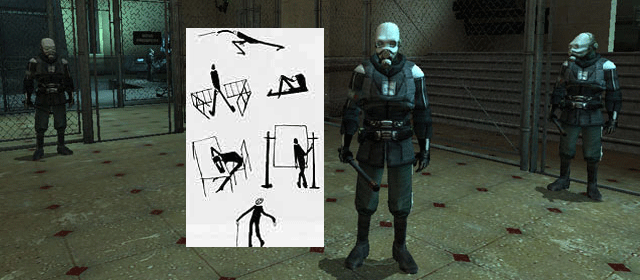Context: This post started out as a comment in response to Raph Koster’s insightful and thought-provoking comment on Brian Lamb’s discussion of the recent article in Harper’s Weekly “Grand Theft Education.” After I finished the first two paragraphs I promoted it to post! 🙂

As I understand it, the term interiority in relationship to narrative refers to a moment wherein a conceptual space, often through figurative language or visual juxtaposition, opens up a world, individual, or idea through a more profound and protracted lens. Such a moment in narative makes me think imeediately of a writer like Kafka -for he is an author that has managed to capturing the feeling of interacting within a dream. Kafka’s art in extended narratives such as The Trial, The Castle and Amerika lies in his power to immerse the reader within a liminal world that traces the manic frailty of subjectivity in relationship to the often absurd and arbitrary nature of power.
Kafka’s ability to allow the reader to interiorize his world is dependent upon many factors. One may argue that his use of metaphor and allegory within an absurdist framework stems from larger intellectual traditions, such as existentialism (read Kierkegaard and Nietzche here) or the psychoanalytical worldview proffered by Freud (who also has a game theory about children which is quite interesting) that serves to inform and unifiy the recurring themes during the narrative trajectory, which for Kafka was almost always incomplete and fragmented.
Another example of interiorizing-one that I was blown away by- is the moment in the very beginning of Half-Life 2 (as the game was teaching me how to play it) when I came across a Combine soldier who repeatedly hit me with his night stick until I was forced to pick up a piece of trash and throw it away: “Pick it up!” – he threatened me. Only when I did his bidding could I move on, and as I passed by the Combine soldier he laughed at me with an imperious manner that both shocked me into subjection and filled me with wonderous contempt all at the same time. All I can think about (after reading Koster’s comment) is how I have, at some level, been brilliantly positioned by the game designers to interiorize the logic of this narrative through the interactive game play.
What is this logic? As I played Half-Life 2 for the first time, Zach, a friend of mine, termed this particular moment of the game as a fine example of the arbitrary abuse of power rampant throughout the narrative. A powerful theme in any narrative, but a unique experience for me in this particular form -for here the narrative themes were not external to the interactive game play, rather they were being nuanced, particularized, and further developed withi the break. This all may be my own conflation of gameplay and narrative, but I have to say that Half-Life 2 has suggested to me that the distinctions drawn between narrative and interactive game play may be prove fleeting. Suggesting that the question is not so much whether one’s interactive game play within a narrative frame provides interiority, but rather how it does?


Pingback: Bioshock Infinite | bavatuesdays